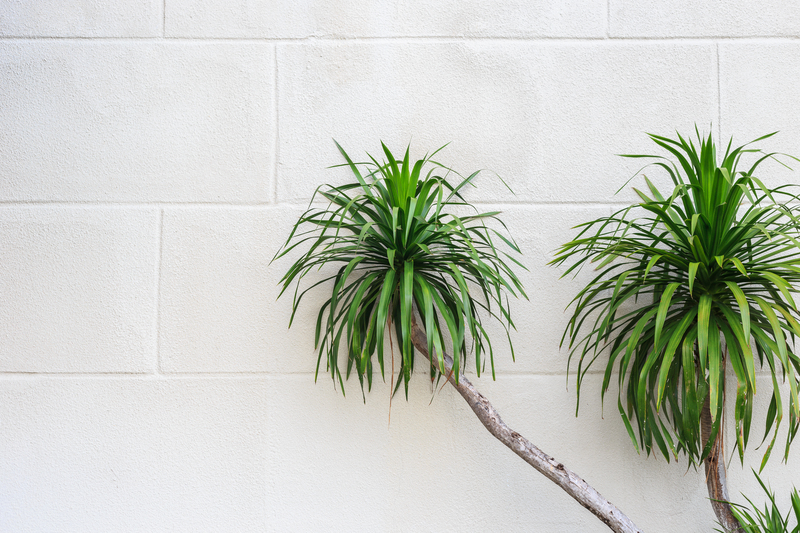A First-Timer's Approach to the Perfect Lawn: Your Easy Step-by-Step Guide
Achieving a lush, green, and healthy lawn is a dream for many homeowners and gardening enthusiasts. If you're a beginner venturing into lawn care for the first time, transforming your patchy or bare yard into the perfect lawn can seem overwhelming. However, with the right guidance, tools, and attention to detail, anyone can create a stunning outdoor oasis. In this comprehensive guide, we walk you through a first-timer's approach to the perfect lawn, offering practical advice, expert tips, and strategies to make your grass greener, healthier, and more enjoyable than ever before.
Table of Contents
- Why a Beautiful Lawn Matters
- Understanding Your Lawn's Starting Point
- Preparing Your Yard: Soil and Site Readiness
- Choosing the Right Grass Type
- Seeding, Sodding, or Plugging: Methods Explained
- Perfect Lawn Watering Techniques
- Mowing for Lawn Perfection
- Fertilizing and Feeding Tips
- Seasonal Lawn Care and Maintenance
- Troubleshooting Common Lawn Problems
- Final Tips for First-Time Lawn Owners
Why a Beautiful Lawn Matters for Homeowners
A well-maintained lawn serves more than just aesthetic purposes--it can increase property value, provide a safe and enjoyable environment for families and pets, and even contribute to local ecosystems by preventing soil erosion and filtering rainwater. When you invest time and effort into creating a lush lawn, you're enhancing both the curb appeal and the functionality of your outdoor space.
For first-time lawn care enthusiasts, starting your lawn care journey sets the groundwork for lasting beauty and pride in your property.
Understanding Your Lawn's Starting Point
Before you make any changes, it's crucial to assess your existing yard. Analyzing your current soil and grass type will help you make informed decisions. Here's how to begin:
- Soil Testing: Purchase a soil test kit or send a sample to a local extension office to measure pH and nutrient levels. Healthy lawns usually thrive in soil with a pH between 6.0 and 7.0.
- Sunlight Levels: Observe how much sun and shade your yard receives during a typical day. Some grass types thrive in full sun, while others perform better in partial shade.
- Previous Conditions: Identify compacted soil, bare spots, weed infestations, or drainage issues. These challenges will influence how you approach your lawn renovation.
Knowing your lawn's starting conditions lets you create a realistic plan and choose the best techniques for lawn perfection.
Preparing Your Yard: Soil and Site Readiness
Preparation is key to achieving the perfect lawn for beginners. Properly preparing the ground ensures your chosen grass gets the best possible start.
Steps to Prepare Your Lawn Area:
- Remove Debris: Clear away rocks, sticks, weeds, and old grass.
- Address Drainage Issues: Create gentle slopes or install drainage if you notice pooling water.
- Loosen and Amend the Soil: Use a rototiller or garden fork to loosen soil 3-4 inches deep. Mix in organic matter like compost to improve texture and fertility.
- Level the Surface: Rake the area until it's even, filling in low spots and smoothing out bumps.
- Apply Starter Fertilizer: For new lawns, spread a seed starter fertilizer formulated to support young grass.
Proper site preparation helps ensure deep root systems, robust growth, and long-term lawn health.
Choosing the Right Grass Type for Your Perfect Lawn
Not all grass types are created equal. Selecting a variety suited to your climate, soil, and lifestyle is vital to the success of any first-timer's lawn care project. Here are the main types:
Cool-Season Grasses
- Kentucky Bluegrass: Deep green, dense, and cold-tolerant but needs well-drained soil.
- Fescue: Drought-resistant and shade-tolerant, popular in northern regions.
- Perennial Ryegrass: Germinates quickly and offers fine texture but requires consistent moisture.
Warm-Season Grasses
- Bermuda Grass: Heat- and drought-tolerant, forms dense turf ideal for high-traffic lawns.
- Zoysia: Withstands wear, resilient in heat, and forms a thick green carpet.
- St. Augustine: Performs well in southern climates and partial shade but sensitive to frost.
Consult with local garden centers, landscapers, or cooperative extensions to determine the best grass seed or sod for your unique conditions. Your lawn's success depends on this crucial step.
Seeding, Sodding, or Plugging: Lawn Planting Methods Explained
Once you've chosen your ideal grass, it's time to introduce it to your yard. Three common ways to establish a lawn are:
- Seeding: A cost-effective way to start a lawn, especially for large areas. Best for cool-season grasses. Broadcast seeds evenly using a hand or push spreader, then lightly rake them into the soil.
- Sodding: Installing pre-grown grass instantaneously transforms your yard. This method is more expensive but yields immediate results. Stagger seams like bricks, press down, and water immediately.
- Plugging/Sprigging: Planting small clumps of growth potential--commonly used for warm-season grasses like Zoysia or St. Augustine.
Remember: The key to success is good soil-to-seed (or soil-to-root) contact and keeping the area moist during early establishment.
Perfect Lawn Watering Techniques: How, When, and How Much
Efficient watering is essential to achieving a healthy, verdant lawn. Here's how you can maximize moisture for your newly planted grass:
- Water Deeply and Infrequently: Encourage deep root growth by watering so that moisture penetrates 6-8 inches down, limiting surface-level evaporation.
- Morning Watering: Water your lawn early (before 10 a.m.) to minimize disease and reduce loss from evaporation.
- Avoid Overwatering: Excess water leads to shallow roots and disease. Most lawns require about 1 inch of water per week, including rainfall.
- New Lawns Need More Care: Keep the top inch of soil consistently moist (but not soggy) until grass is established, then gradually reduce frequency.
Accurate watering schedules make a critical difference between a mediocre yard and a top-tier lawn.
Mowing Tips for First-Time Lawn Owners
Proper mowing is more than just cutting grass--it's about promoting strong, healthy growth. Follow these first-timer mowing tips for the perfect result:
- Mow When Dry: Wet grass clumps and clogs mowers; always mow on a dry day.
- Use Sharp Blades: Dull mower blades tear grass, making it prone to disease.
- Follow the One-Third Rule: Never remove more than one-third of grass height in a single mowing. Aim for a finished height of 2.5-3.5 inches for most grass types.
- Switch Up Your Mowing Pattern: Change direction each time to prevent soil compaction and create a more uniform appearance.
- Leave Clippings: If you mow regularly, mulching clippings returns nutrients to the soil.
Regular and thoughtful mowing is a cornerstone of ongoing lawn perfection.
Fertilizing and Feeding the Perfect Lawn
Fertilization gives your lawn essential nutrients for robust growth, color, and resilience. Here's how first-timers can nourish their new lawn:
- Time Fertilization Wisely: For cool-season grasses, feed in spring and fall; for warm-season, fertilize in late spring through summer.
- Choose the Right Product: Read the label and select a fertilizer that matches your grass type and soil needs (based on your soil test).
- Apply Evenly: Use a spreader to distribute fertilizer evenly and prevent "hot spots" or burnt patches.
- Don't Overdo It: Excess fertilizer can damage grass and endanger the environment. Start with the recommended rate.
Remember, feeding your lawn properly supports deep roots and ensures a healthy, vibrant green color all season long.
Seasonal Lawn Care and Year-Round Maintenance
Maintaining the perfect lawn is a year-round commitment. Each season brings unique challenges and opportunities to keep your grass thriving.
Spring
- Rake thoroughly to clear winter debris.
- Aerate if your soil is compacted.
- Apply pre-emergent weed control if needed.
Summer
- Monitor for pests and drought stress.
- Water deeply, mow high, and avoid fertilizing during extreme heat.
Fall
- Reseed thin patches.
- Fertilize cool-season grasses to prep for winter.
- Rake fallen leaves quickly to prevent smothering grass.
Winter
- Limit foot traffic on dormant grass.
- Keep the lawn clear of objects that might block sunlight or cause disease.
Staying on top of these seasonal tasks keeps your lawn healthy and sets the stage for next year's perfection.
Troubleshooting Common Lawn Problems: A First-Timer's Guide
Even with the best preparation, lawn problems may arise. The earlier you address them, the easier it is to maintain your perfect yard. Watch out for:
- Weeds: Pull by hand, spot-treat with herbicide, and keep your grass thick to outcompete weeds.
- Pests: Grubs, chinch bugs, and sod webworms can damage roots. Identify the pest and use appropriate controls.
- Disease: Brown patches, rings, or mildew indicate fungal problems; improve air circulation and adjust watering.
- Thatch: Excessive dead material at the soil line can suffocate roots. Dethatch in early spring or fall.
Have patience--many lawn issues resolve with healthy lawn care habits and prompt attention.
Final Tips for First-Time Lawn Owners: The Path to Lawn Perfection
- Be Patient: Beautiful lawns take time. Expect results in months, not weeks.
- Stay Consistent: Good lawn care is all about routine--stick with your schedule for mowing, watering, and feeding.
- Use the Right Tools: Invest in high-quality mowers, spreaders, hoses, and sprinklers for the best results.
- Keep Learning: Every lawn is different. Observe changes, research solutions, and don't hesitate to ask experts for advice.
Your first lawn care journey is the beginning of years of pride, beauty, and enjoyment from your outdoor space. By following the above steps and nurturing your patch of green, you're well on your way to having the perfect lawn--even as a first-timer!
Ready to transform your yard into a personal paradise?
Start your lawn care journey today, and refer back to this guide whenever you need a reminder or a boost of motivation. For more tips on achieving and maintaining the perfect lawn, follow our blog and join the community of happy, green-thumbed homeowners!

